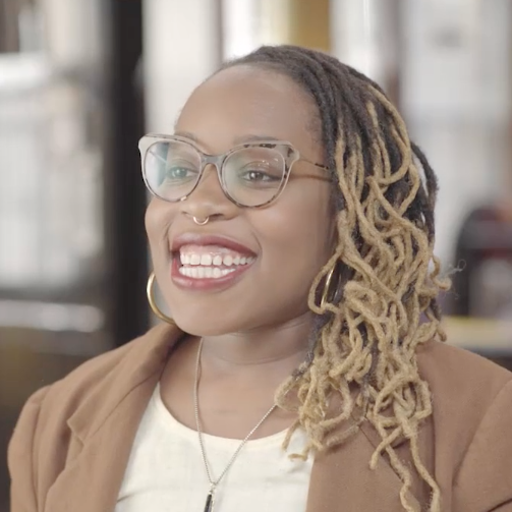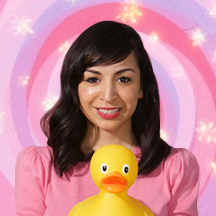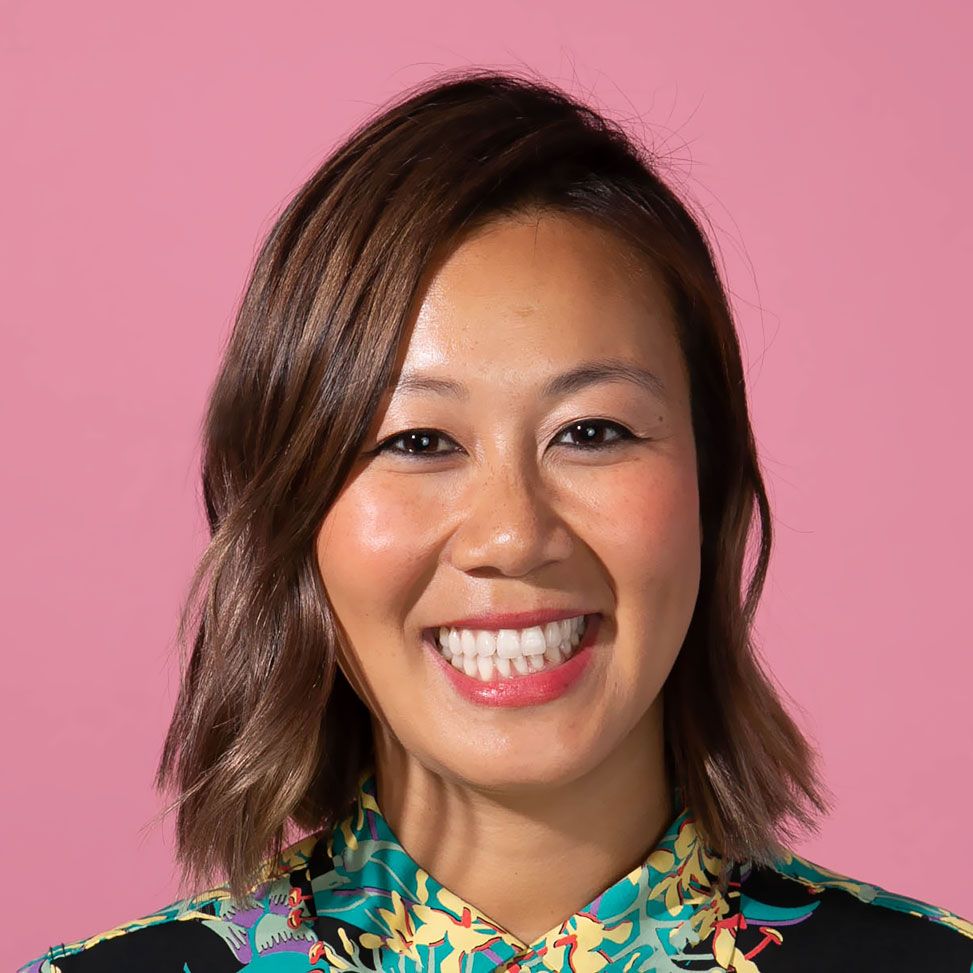In our pre-pandemic, in-office days, the creative team had a photo studio at Slack HQ where we shot photography for all of slack.com. Over the course of a year, we had built the studio from the ground up, complete with camera and studio equipment, colored backdrops, and props ranging from rubber duckies and wooden blocks to abstract objects made from glass, granite, and marble. But when COVID hit, we suddenly lost access to our space, as well as all the fantastic sets and pieces we had planned to shoot with for Q2 and beyond.
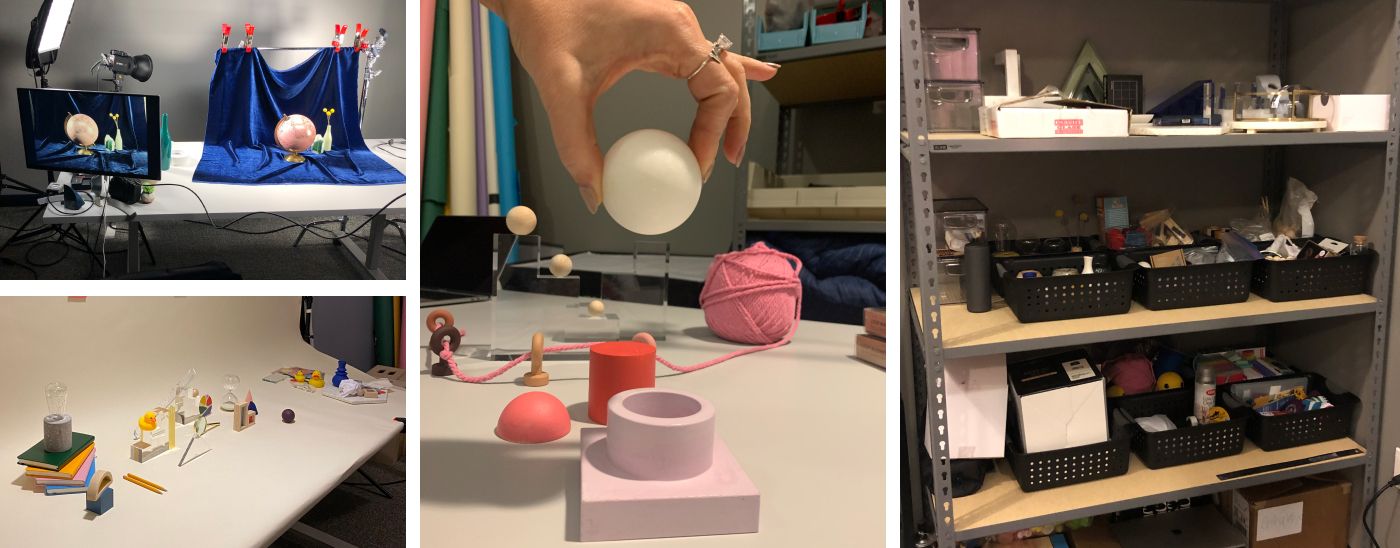
The photo studio at Slack HQ
Without access to our studio, shooting our own photography in our signature still-life style was no longer an option. We needed to figure out a new way to create assets for the marketing webinars and other educational content that lives in slack.com’s Resources Library.
At first, we tried to work with stock photos. We scoured photo databases extensively for images that not only fit the required theme but also matched our brand style. But this strategy was slow going and clunky; looking for the right photo took too long, and even then, it required extensive retouching to fully match our existing aesthetic. Searching for photos was more of a task rather than a creative project that took away from our ability to come up with our own concepts. It was a lonely experience, too, in that instead of collaborating and creating something together, we were trying to make someone else’s work fit within our brand. We were stuck: how could a remote creative team build a time-efficient and scalable system for art direction?
That’s when we decided to recreate our photoshoots from home. A remote photoshoot would give us the perfect opportunity to design our own unique assets, be creative within new constraints, and find some joy during a pandemic. It was a no-brainer for the team to find a way to capture the creative energy that might have otherwise gotten lost in such a dramatic transition.
We just needed to find the right partner. It was crucial that we find a photographer with remote photoshoot expertise who could also welcome creative input from our team. In our search, we came across a New York Times article with photography that was conceptual while staying clear and concise, which matched the direction we were trying to achieve. The photographer, Margeaux Walter, had also been featured in the New York Post and the Seattle Times as well as a number of museum exhibitions. We immediately reached out to her.
Pre-production
When we first met with Margeaux through Zoom, we presented her with a mood board to give her an idea of what we were looking for. The board consisted of samples of our past work as well as aspirational photography we sourced. We also showed her our brand color palette, which would dictate the color backdrops for each photo. We needed one hero image for six webinars, each with a distinct visual concept to convey a range of ideas like apps and tools, APIs, and building workflows in Slack. So we wrote up six separate briefs, explaining the theme for each shot. Each brief included some initial concepts as thought-starters, but we encouraged Margeaux to explore other options.
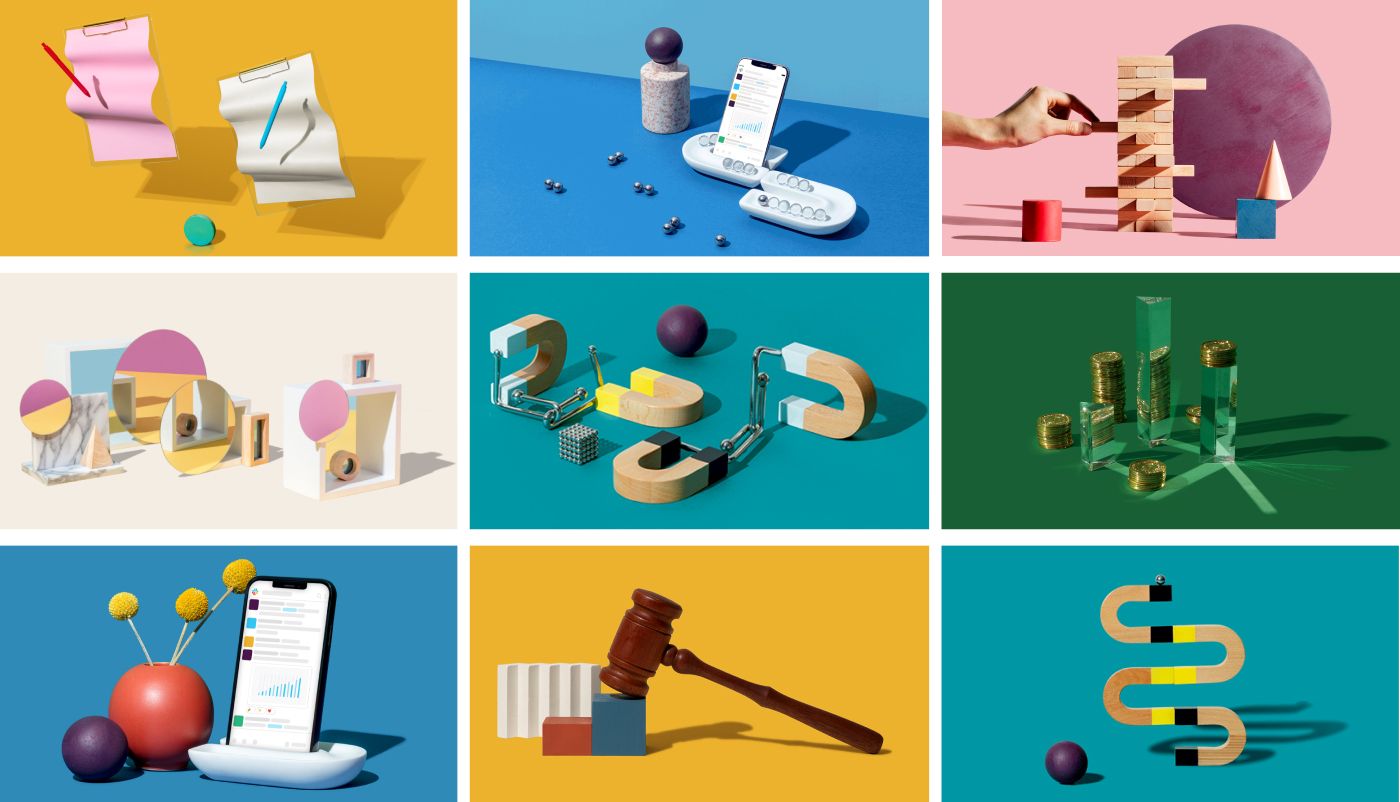
A moodboard for one of the briefs we sent Margeaux
In Slack, we set up a guest account for Margeaux and invited her to our production channel to share her initial ideas. After a few days, Margeaux came back to us with sketch options for each concept. We arranged a second Zoom call to go over the options, choose backdrop colors for each, and finalize all the concepts.
Before going remote, we didn’t always have sketches for each shot, because we could play with props on set to figure out the final look. Now, they were critical: because we were not going to be in the same room when shooting, the sketches allowed everyone to visualize the images in advance and make any tweaks before moving to the next stage. They helped all parties stay aligned on how the final shots would look.
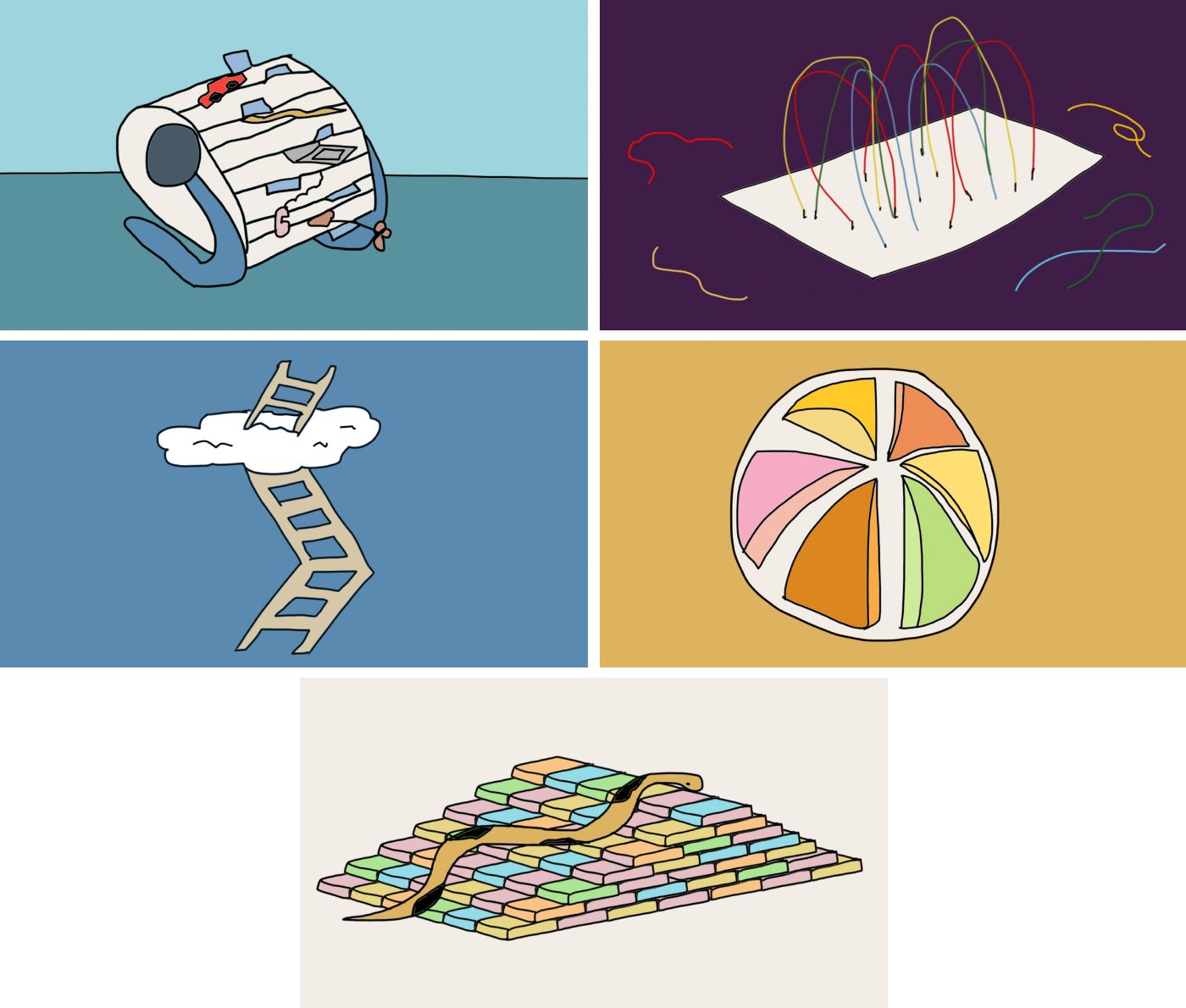
Sketches from Margeaux against our concepts
Next up: prop shopping! If not for the pandemic, the creative team would be sourcing or building our own props internally. Now, Margeaux spent a few days sourcing props both online and in a few brick-and-mortar shops. It was great to work in our Slack channel during this stage; Margeaux could send us prop options, and we could provide her with immediate feedback on each.
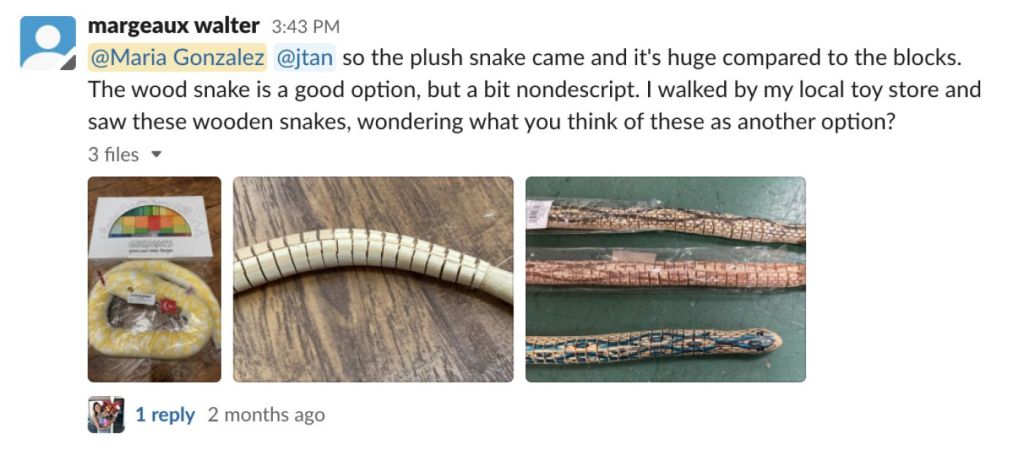
Discussing props in Slack
Production
That immediate feedback continued through the day of the photoshoot. Pre-pandemic, we would use our studio to set up our own lighting, play with prop layouts, and shoot a couple of different options. We would all be in the same room playing with options and reviewing as a team.
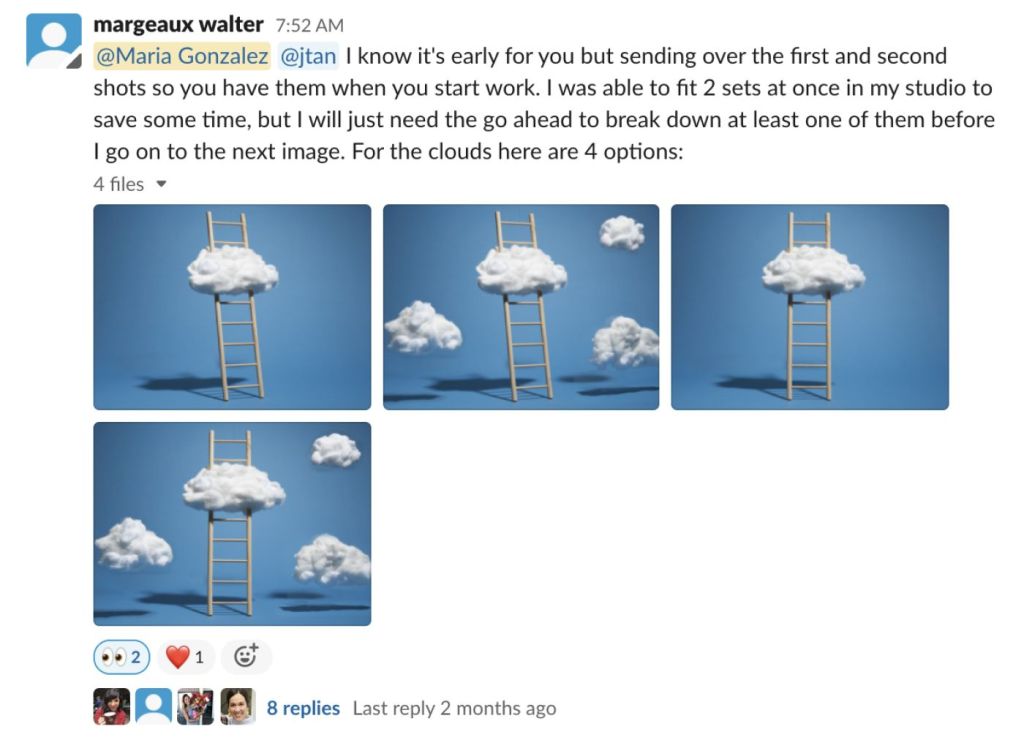
Margeaux uploaded a number of options for each concept to our production channel, where we offered feedback and decided on which images to use
Now we convened digitally, in our Slack workspace. We began the day by reviewing prop setups with Margeaux in our production channel. She sent photos of each setup and we provided feedback using emojis, such as 👀 to indicate whether we were reviewing, ✅ to say the shot was good to go, and➕ when we all agreed on a decision.
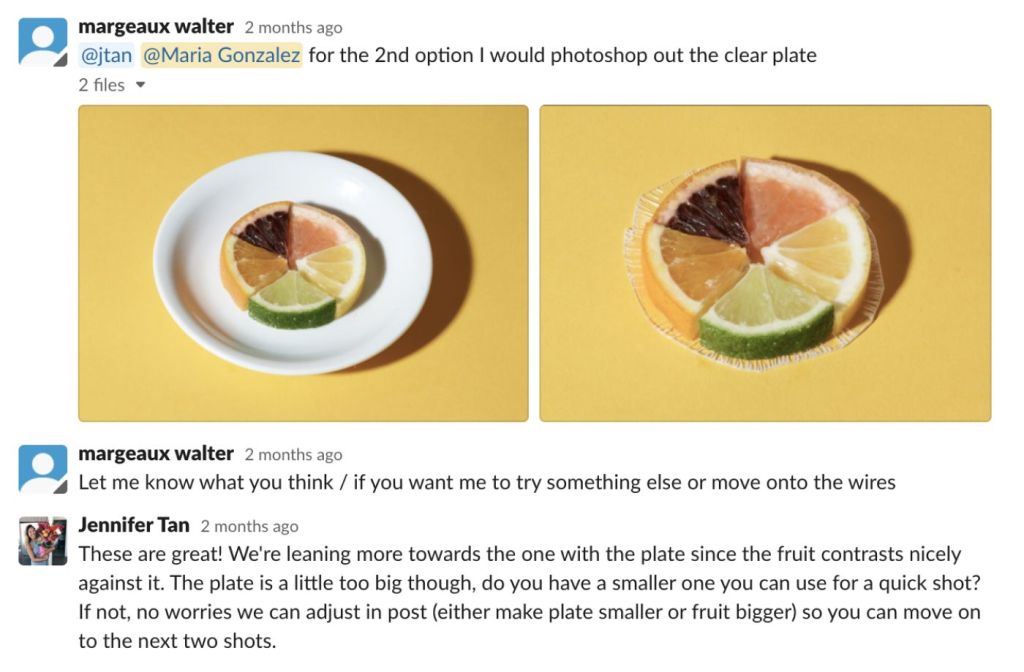
Working through feedback in a thread
We offered feedback on lighting, layout, and color under each shot, using threads to keep conversations organized and therefore move quickly. All conversations, relating to a specific shot were kept in the same thread, and Margeaux was tagged on all messages so that she would be notified of any new replies.
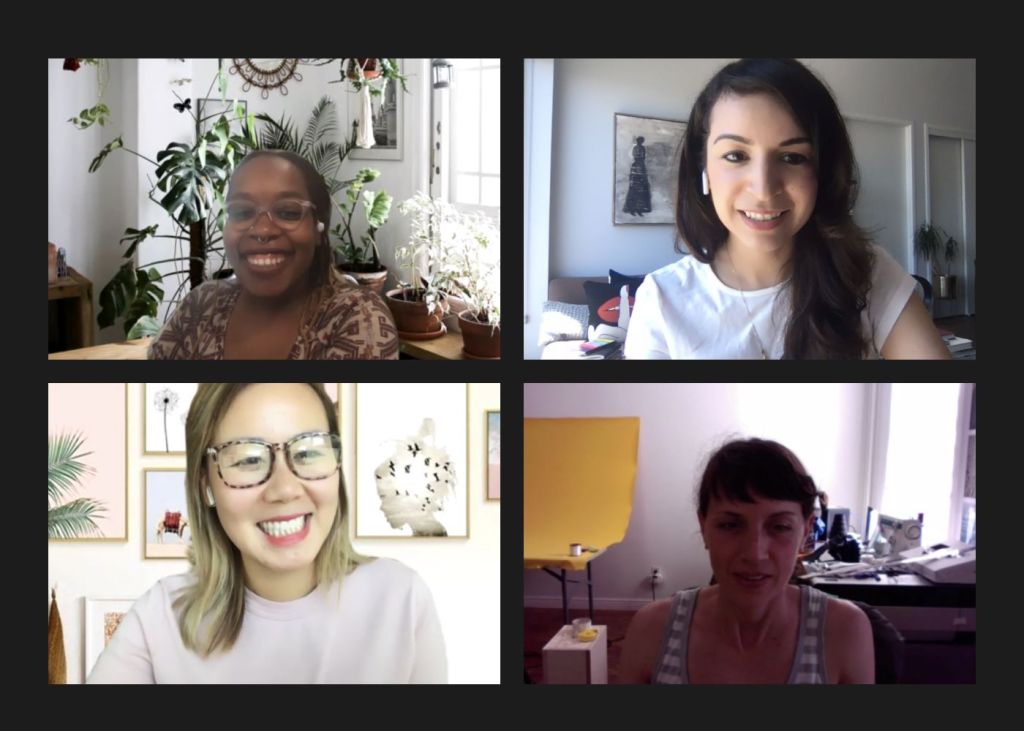
Jenn explaining a change in art direction to the angle of a shot
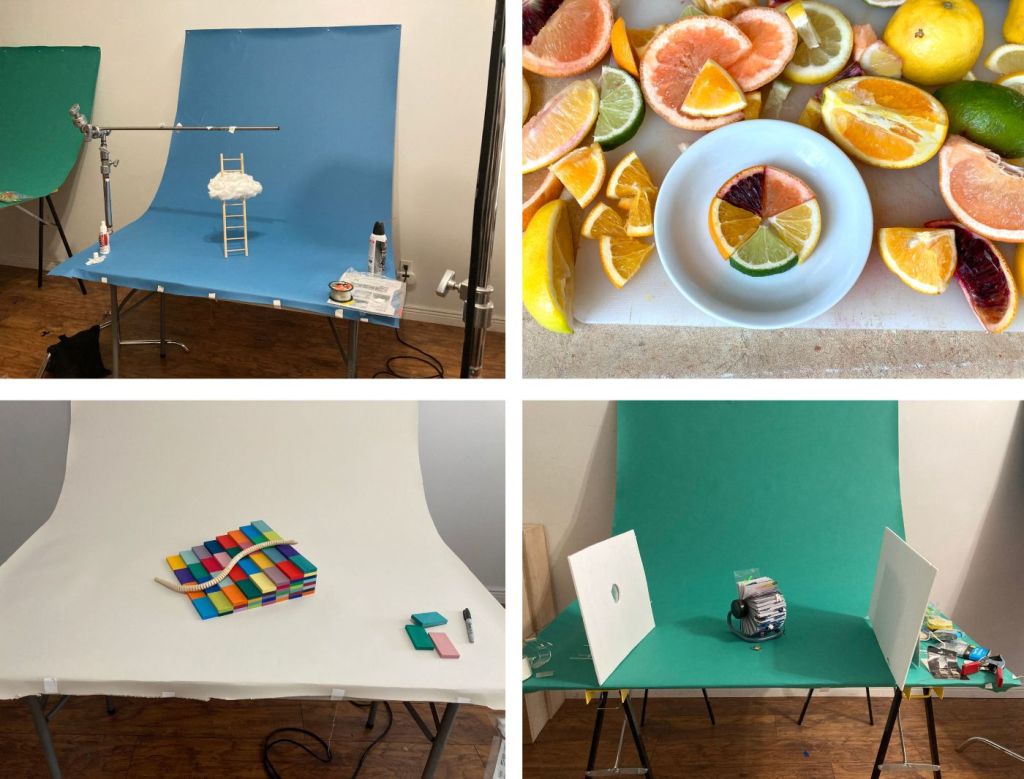
Behind-the-scenes shots from Margeaux’s home studio
Post-production
Slack continued to be a perfect collaboration space for post-production. Again in threads, we were able to provide Margeaux with feedback on the retouching of each image. Fortunately, we had been able to find paper backdrop colors that were already close to the theme colors we had used in previous Resources Library assets, so that part of retouching was minimal. In addition to backdrop matching and general cleanup, we also worked together to enhance or sharpen any shadows, as defined shadows are part of our signature photography art direction.
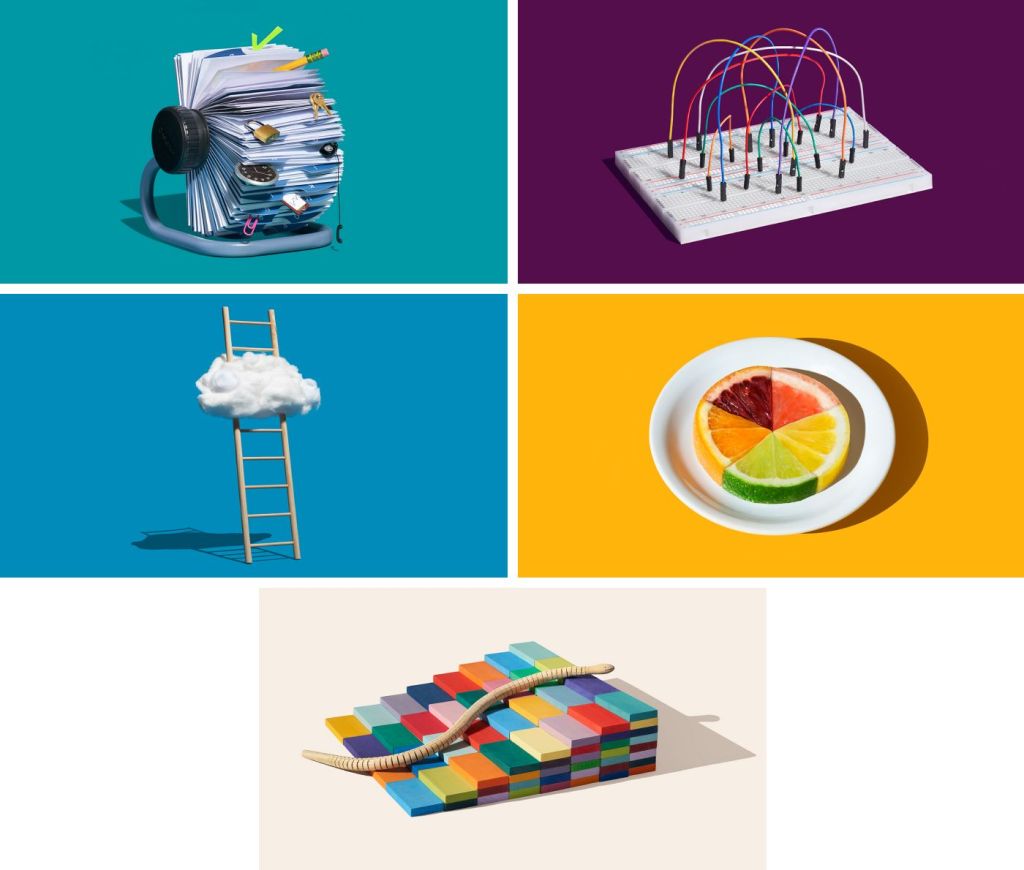
After several rounds of feedback and light retouching, we had our final images
Though Covid-19 has prevented us from conducting video and photoshoots in person, we managed to build a replicable solution out of the tools we already use every day. It forced us to learn how to adapt quickly as a team, replicating the in-person creative experience of a photoshoot as best we could through Slack. With guest accounts and channels, we’ve able to collaborate quickly and efficiently, exchanging feedback instantly and keeping the whole team in the loop through last-minute changes in the art direction. We really enjoyed working and learning with a new creative partner, even from afar. She introduced a new creative style, through sketches, and brought a new perspective on each shot. We were pleased with how all the photos came out, but even more so, we were pleased with the process we were able to establish.
